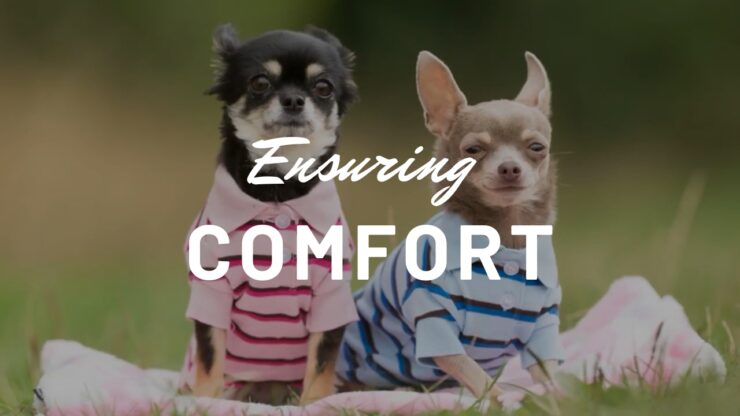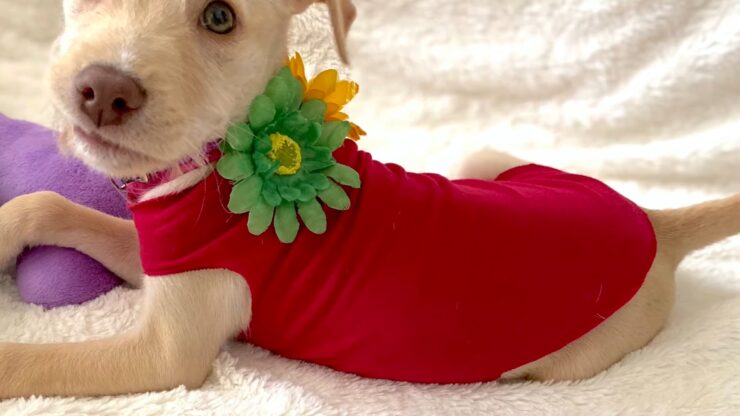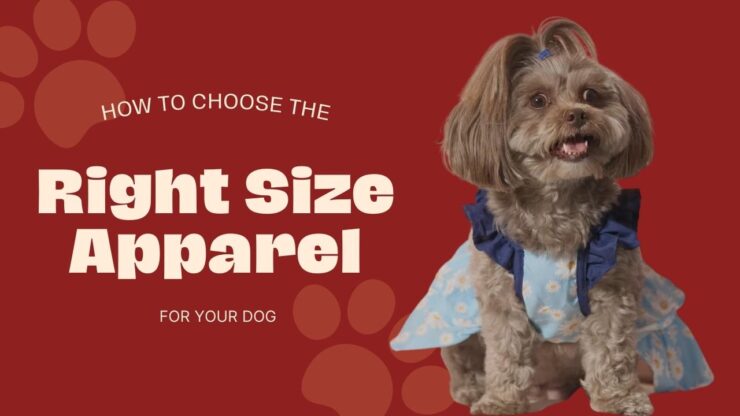Welcome to the sartorial journey into the world of dog apparel! This is a realm where not only fashion but also comfort, protection, and practicality intertwine, and choosing the perfect size for your beloved pet can often be a bit challenging.
Fear not, this comprehensive guide will make your task easier, helping you understand your dog’s body, recognize signs of discomfort, and choose the right fit and material, among other essential aspects. Let’s dive in!
Considering Your Dog’s Breed and Body Shape

To start, the significance of your dog’s breed and body shape cannot be overstated. This factor plays an essential role in determining the correct size and type of apparel. Large breeds, for instance, like Great Danes or St. Bernards, require much larger clothing than smaller ones like Chihuahuas or Pomeranians.
Do keep in mind, however, that breed alone is not always an accurate indicator of size. Differences in weight, height, and overall body structure within the same breed may lead to varying apparel needs.
Focusing on body shape, it’s crucial to remember that every dog has its unique physical attributes. The slender greyhound, the sturdy bulldog, the petite Pomeranian—all present distinct requirements.
For instance, a garment that fits snugly on a bulldog might be too loose around the torso of a greyhound. Therefore, understanding your dog’s body shape is fundamental in the quest for the right-sized apparel. You do not want your doggy dresses to be too small or too big!
Tips for Choosing the Right Fit
Armed with a keen understanding of your dog’s breed and body shape, it’s now time to turn your attention to fitting. The fit of dog apparel should be snug but not restrictive, allowing your pup to move freely.
Begin by measuring your dog’s neck, chest, and body length. The neck measurement should be taken at the broadest part, chest measurement should be done at the widest point – typically just behind the front legs, and body length should be measured from the base of the neck to the base of the tail.
As you embark on this process, bear in mind that the proper fit not only depends on accurate measurements but also requires attention to your dog’s overall comfort. It’s crucial to avoid any clothing that is too tight, as this can restrict movement and cause discomfort.
The same goes for overly loose clothes—they may trip up your dog or even slip off. It’s all about finding that sweet spot between too tight and too loose.
Trying On Apparel and Ensuring Comfort

Once you have your measurements in hand and a few potential pieces of clothing selected, it’s time for a fitting session. Like us humans, dogs too need to “try on” clothes to ensure a good fit. Look for clothes that are easy to put on and take off. Outfits that have Velcro or snap buttons are a good option, as they can be adjusted to fit your dog’s body better.
Beyond the mechanics of putting the clothes on and off, observe your dog’s behavior. Does your pet seem comfortable and able to move freely? Or do they appear uncomfortable, trying to shake off the clothes or scratch at them? These signs can tell you a lot about how well the clothing fits and whether it’s causing any discomfort. Be patient and remember that your dog’s comfort is paramount.
Addressing Specific Apparel Needs (e.g., Coats, Sweaters, Booties)
Depending on the climate and your dog’s lifestyle, different types of apparel may be required. Coats and sweaters are excellent for keeping your dog warm during the chilly months, especially for smaller breeds or those with short fur. When choosing these, ensure they cover your dog’s back and belly adequately without restricting leg movement.
Booties can protect your dog’s paws from harsh surfaces, hot pavement in summer, or icy conditions in winter. Booties should fit snugly, but not too tightly that they hinder circulation. Always check if your dog is comfortable walking in them, as some dogs might require time to adjust to the sensation of having their paws covered.
Dealing with Special Considerations (e.g., Senior Dogs, Puppies)

When it comes to dressing puppies and senior dogs, special considerations must be taken into account. Puppies are rapidly growing, meaning they’ll quickly outgrow their clothes. It may be worth opting for adjustable clothing or budget-friendly options that can be replaced as they grow.
Senior dogs might have mobility issues or suffer from ailments such as arthritis. For them, clothing that’s easy to put on and take off, preferably without having to move their limbs too much, would be ideal. Warm clothing can also help soothe joint pains during colder months, adding to their comfort.
Checking for Signs of Discomfort or Poor Fit
Vigilance is key when checking for signs of discomfort or poor fit. Watch for any chafing, redness, or sores on your dog’s skin, especially around the edges of the clothes. These could indicate the clothes are rubbing against your dog’s skin and causing irritation.
If your dog shows signs of behavioral changes like incessant scratching, whimpering, or attempting to bite or chew on the clothing, it might suggest that the clothes are causing discomfort. Remember, the goal is to enhance your dog’s comfort and protection, not to create an uncomfortable or stressful situation.
Selecting Appropriate Materials and Fabrics

Material selection is another significant aspect of choosing dog apparel. Breathable fabrics like cotton or fleece are typically a good choice as they can keep your dog comfortable while preventing overheating. In cold weather, consider a lined or quilted coat to provide warmth.
In the case of raincoats or snow gear, waterproof or water-resistant material is a must. Similarly, if you’re considering booties, opt for durable materials that can withstand rough surfaces without causing discomfort to your dog’s paws. Always prioritize comfort, suitability for the climate, and durability when choosing materials.
Common Mistakes to Avoid
Let’s touch on some common pitfalls to avoid. Many pet owners often pick clothes based on looks alone. While it’s fun to have stylish outfits for your furry friend, never prioritize style over comfort and functionality. Furthermore, not all ‘size small’ or ‘size large’ labels are created equal. Sizes vary greatly across brands, so always refer to the brand-specific size chart and your measurements.
Neglecting to wash new clothes before the first wear is another frequent oversight. This can lead to skin irritation due to residual dyes or chemicals in the fabric. Always wash new apparel before dressing your dog in it.
The Final Pawprint

Wrapping up our comprehensive guide to selecting the right size apparel for your dog, we hope this has armed you with the knowledge and confidence to make the best decisions.
The quest might seem daunting at first, but with a dash of patience, a sprinkle of understanding, and a heap of love, you’ll soon find the perfect outfits that blend style, comfort, and functionality for your furry friend. After all, this journey is as much about bonding with your dog as it is about their wardrobe.
If you’re considering bringing a new furry friend into your life, there are 10 essential factors you should carefully contemplate.

